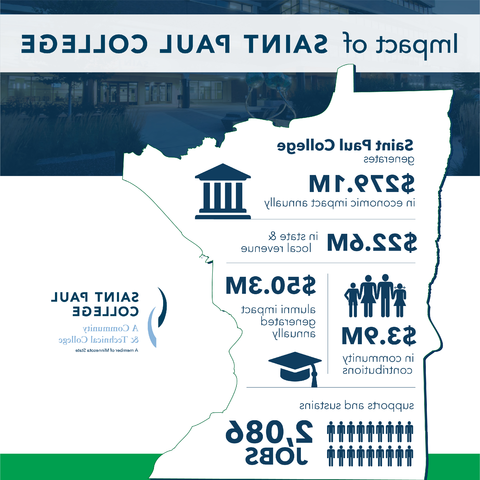Economic Impact Overview
The 26 colleges and seven universities that comprise Minnesota State make a significant impact on the state’s economy. According to an economic contribution analysis released, a the total impact on the state’s economy was $8.4 billion in FY2022. The study also concludes that the economic activity of the system supported or sustained 62,125 jobs throughout the state.
The study was conducted by Parker Philips, a nationally recognized consulting firm specializing in economic impact analysis. Nichole Parker, a principal partner at Parker Philips, said, "Through the many changes in the higher education system and the continued effects of the COVID-19 pandemic, Minnesota State continues to be a strong steward with their resources and a powerful economic impact hub. Producing successful graduates that fulfill the workforce needs of the state while meeting students’ changing and diverse needs, the $8.4 billion generated clearly shows that Minnesota State is integral to the state’s economy."
The data estimates the annual impact of Saint Paul College on the regional economy to be $279.1 million and 2,086 jobs. The analysis considered the direct spending on operations, pay, benefits, and capital projects by Saint Paul College and the estimated increase in demand for goods and services in industry sectors that supply or support the College. The study also measured the effect of student spending and the induced effect of increased household income. The study also calculated tax revenues generated by this level of economic activity, including sales, property, personal income, and corporate income taxes. The study concluded that Saint Paul College generates $22.6 million in tax revenues for state and local government. The study further estimated the value of the increase in productivity that the degrees awarded by Saint Paul College yield throughout the careers of the graduates. Over their 40-year career, Saint Paul College alumni will generate $2 billion in the economy (future value, discounted and adjusted to account for such factors as foregone income while attending school and outmigration).
Read the Full Report

About the Study
Conducted by Parker Phillips, the primary tool used in the performance of this study is the I-O model and dataset developed and maintained by IMPLAN Group LLC (formerly Minnesota IMPLAN Group, Inc.). IMpact analysis for PLANning (IMPLAN) is a widely accepted and used software model first developed by the U.S. Forest Service in 1972. The data used in the baseline IMPLAN model and dataset come largely from federal government databases. The input-output tables themselves come from the Bureau of Economic Analysis. Much of the annual data on labor, wages, seasonal demand, and other market data comes from the Bureau of Labor Statistics, the Census Bureau, and other government sources.
This study is a contribution analysis and builds upon the methodology and measurement previously utilized by Minnesota State in its 2018 analysis. The study quantifies the economic contribution of all colleges and universities of Minnesota State in terms of economic impact, jobs, and local and state tax revenue. The study calculates how spending by the Minnesota State colleges and universities, employees, visitors, and students contributes to the vitality of Minnesota. It examines how expenditures create additional impact in the economy.